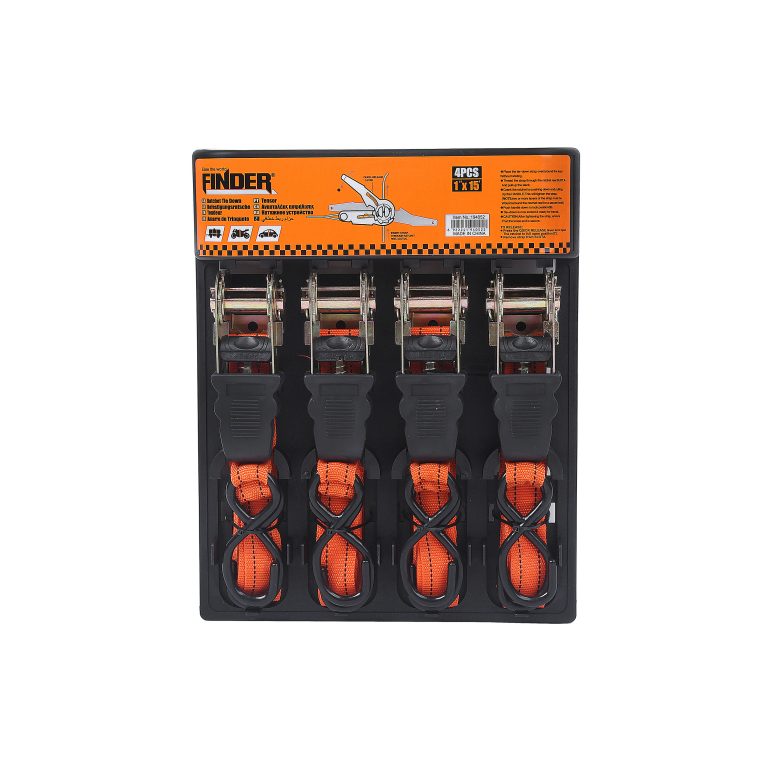Securing Cargo with Ratchet Tie Downs
When it comes to transporting cargo, using ratchet tie downs is crucial for ensuring the safe and secure delivery of goods. These tension straps, also known as cargo straps or ratchet straps, play a vital role in keeping the cargo in place during transportation. Whether you’re moving furniture, equipment, or other heavy items, ratchet tie downs are indispensable tools for securing the load and preventing any shifting or damage in transit.

Key Components and Functions
Ratchet Mechanism
The ratchet mechanism is the heart of the ratchet tie down, allowing for effortless tightening and securing of the cargo straps. This mechanism consists of a gear and pawl, which work together to create a locking action that prevents the webbing from loosening once tension is applied. Understanding how the ratchet mechanism operates is essential for effectively using ratchet tie downs to secure cargo during transportation.
Webbing and Hooks
The quality and strength of the webbing are paramount when it comes to securing heavy cargo. The webbing material should be durable and resistant to stretching, ensuring that it can withstand the weight and pressure of the load being transported. Additionally, proper use of hooks is crucial for maintaining the stability of the ratchet tie down system. The hooks should be securely attached to anchor points on both the vehicle or trailer and the cargo itself, providing a reliable connection that keeps the load in place.
Tensioning and Releasing Cargo
Proper Tensioning Techniques
Maintaining the right amount of tension in the ratchet tie down is crucial for ensuring the safe and secure transportation of cargo. When applying tension, it’s important to strike a balance. Over-tensioning the cargo straps can lead to potential damage, causing unnecessary strain on both the straps and the cargo. On the other hand, under-tensioning may result in the cargo shifting during transit, posing a risk to both the load and the vehicle.
To achieve proper tensioning, it’s essential to apply gradual force while continuously checking for resistance. This approach ensures that the cargo is securely fastened without subjecting it to excessive pressure. By following proper tensioning techniques, you can maintain the integrity of both the ratchet tie down system and the transported goods.
Safe Cargo Release
Understanding how to safely release tension from ratchet tie downs is equally important as applying it. A controlled release process is essential for preventing sudden movements of the cargo during unloading. Releasing tension gradually allows for a smooth unloading experience, reducing any potential risks associated with abrupt shifts in weight.
When releasing cargo, always ensure that there are no obstacles or individuals near or around the load to prevent accidents. By taking these precautions and understanding safe release procedures, you can efficiently unload your cargo without compromising safety.
Checking for Wear and Tear
Regular Inspection
When it comes to ensuring the safety and reliability of ratchet tie downs, regular inspections for wear and tear are paramount. By routinely examining the tension straps, you can identify any signs of damage or weakening that may compromise their ability to secure cargo effectively during transportation.
During the inspection process, pay close attention to the webbing material for any fraying, cuts, or abrasions. Additionally, inspect the ratchet mechanism for any signs of corrosion or malfunction. Any compromised components should be promptly addressed to maintain the integrity of the ratchet tie down system.
Replacing Worn-out Parts
Knowing when to replace worn-out parts is crucial for maintaining the functionality and safety of ratchet tie downs. If any components show signs of wear, such as weakened webbing or damaged hooks, it’s essential to replace them promptly. By addressing worn-out parts proactively, you can prevent the risk of failure during transportation and ensure that your cargo remains securely fastened throughout the journey.
Using Ratchet Tie Downs for Motorcycles
When it comes to securing motorcycles for transportation, using ratchet tie downs requires special attention and consideration. Motorcycles present unique challenges due to their shape and design, making proper positioning and tensioning crucial for safe transit.
Securing Motorcycles
Securing motorcycles with ratchet tie downs involves carefully positioning the straps to ensure that they support the bike’s weight evenly. It’s essential to fasten the tension straps at multiple points on the motorcycle, distributing the load effectively to prevent any shifting during transport. Additionally, being mindful of where the anchor points are located on the vehicle or trailer is vital for securely fastening the motorcycles in place.
Weight Limits and Restrictions
Understanding weight limits and restrictions is paramount when using ratchet tie downs for motorcycles. Exceeding weight limits can lead to instability during transportation, potentially causing damage to both the motorcycles and the vehicle carrying them. By adhering to weight restrictions and ensuring that the ratchet tie downs can safely accommodate the load, you can guarantee a secure and smooth transport process for your motorcycles.
Mastering Ratchet Tie Down Techniques
Mastering the art of using ratchet tie downs is crucial for ensuring the safe and secure transportation of cargo. By understanding the key components, proper tensioning techniques, and regular maintenance, you can maximize the effectiveness of ratchet tie downs in securing your load. Whether you’re transporting furniture, equipment, or motorcycles, mastering these techniques will help you safeguard your cargo throughout the journey.
Remember: Proper tensioning and regular inspections are essential for maintaining the reliability of ratchet tie downs and ensuring the safety of your transported goods.
By mastering these techniques, you can have peace of mind knowing that your cargo is securely fastened during transit.
